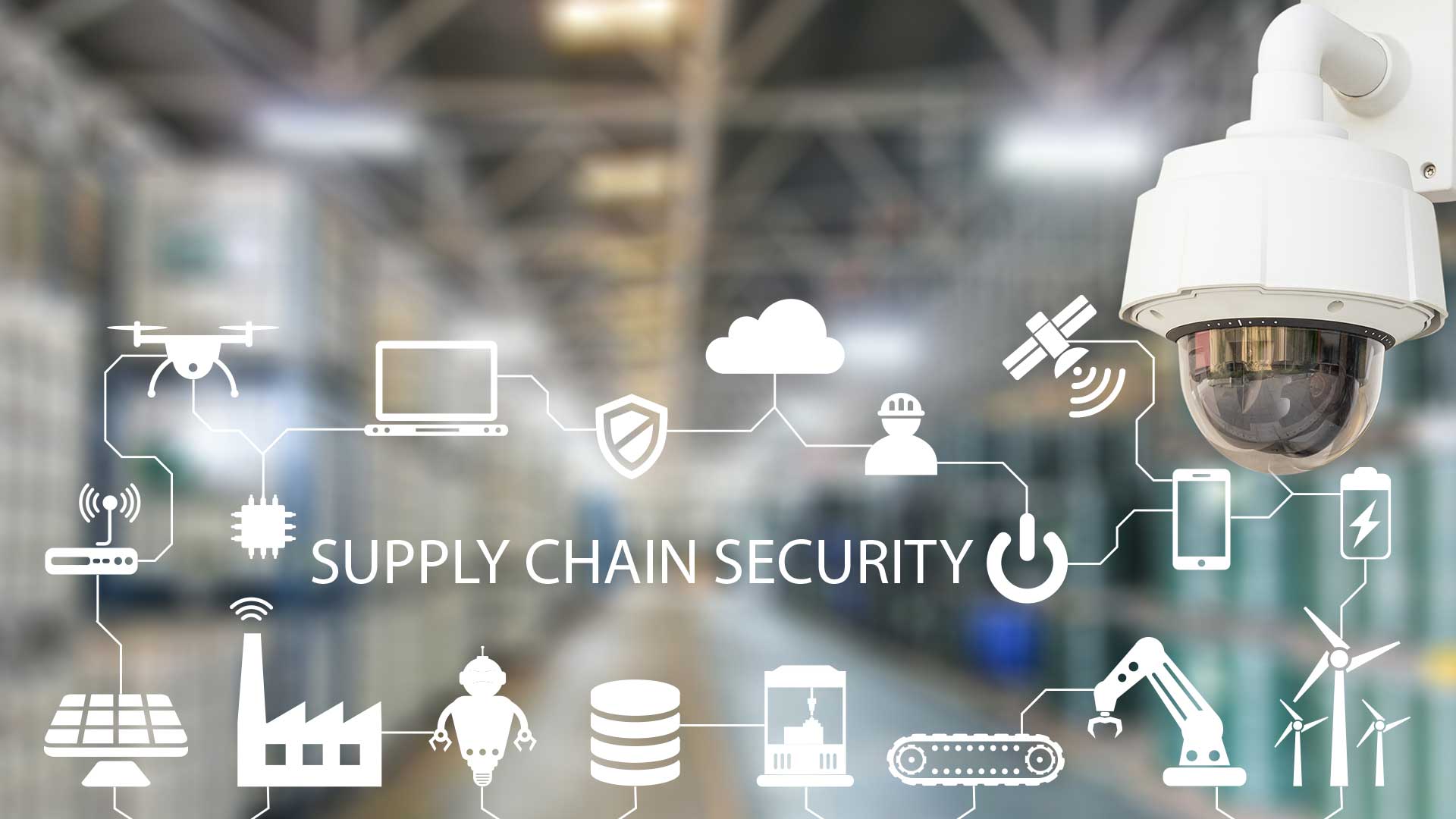In modern supply chains, what is the importance of risk management?

In modern supply chains, what is the importance of risk management?
Making money is the main objective of all companies. In a perfect world, a successful product that meets a particular demand for an expanding consumer base would guarantee revenues. Unfortunately, we do not live in a world that is so ideal. Business success is influenced by several factors.
The past two years have once again demonstrated how these factors are impacted by a wide range of occurrences, including pandemics, geopolitical unrest, wars, blockages on cargo routes (such as the Ever Given accident in the Suez Canal), natural disasters, political unrest, regulatory announcements, changes in leadership, production shortages, shipping container shortages, supply gluts, etc. Sometimes, although not often, these variables abruptly change from positive to negative.
Unexpected turns increase specific hazards dramatically and have a rippling impact on others. Manufacturers of commodities are particularly affected since they are a growing element of intricate global supply networks. Therefore, it is essential to manage, monitor, and mitigate the financial risks of the various supply chain partners.
A Supply Chain’s Different Financial Risks
The financial risk to the whole supply chain exists when one risk endangers the viability of any company that is a link in a manufacturing supply chain. Different kinds of financial hazards exist, and the exposure to these risks has to be gauged, evaluated, and managed at all times.
Some of these dangers consist of:
- Bad debts, or nonpayment of dues by the consumer, distributor, or dealer
- The supplier fails to deliver the items as promised or delivers subpar goods
- Delays in the availability of raw materials, components, and other items affect the working capital cycle and increase the cost of producing and distributing the finished product.
- Commodity price volatility; if adequately hedged, commodity prices can pose significant financial risks to enterprises.
- Exposure to unhedged foreign currency risks
- Labour shortages in the supply chain result in delays and increased prices. For instance, the current tight labour markets in the US are driving up wages and creating a scarcity of workers, which has an impact on the whole supply chain.
- During the COVID-19 epidemic, shipping delays brought on by a lack of available shipping containers or boats led freight rates to soar and hurt the profitability of many enterprises.
- Issues resulting from defective legal contracts between buyers and sellers, especially in international transactions; these transactions cause delays in the clearance of goods from ports and result in very expensive demurrage expenses.
- Trade sanctions may be imposed as a result of geopolitical crises like war and conflict, which have long-term financial repercussions on supply chains.
Financial Risk Management in the Supply Chain is Required
/GettyImages-875110490-5b9ea85fc9e77c0050b86841.jpg)
To assess the state of the supply chain, the Federal Reserve Bank of New York has developed a new indicator dubbed the Global Supply Chain Pressure Index (GSCPI). Up to 2020, this measurement, which dates back to 1997, showed very minor deviations. The index has increased to previously unheard-of heights since the outbreak, as supply chain pressures have skyrocketed.
Unsurprisingly, the demand for better supply chain management has also increased as a result of the pandemic’s lessons. Companies are thinking about creating alternate sources of supply that are closer to home due to supply-chain interruptions, especially for essential products like silicon chips and medications. Having said that, given cost and productivity arbitrage across nations, regionally diversified and complicated supply networks are here to stay for the majority of products.
Companies’ CFOs, Chief Risk Officers, and Supply Chain Directors must work together to develop a risk management strategy that protects the business from the financial effects of the risks listed previously in this article. Several goals of risk management in the supply chain area include:
- to stop the bleeding and stop the erosion of profits
- preventing hiccups and delays in the supply chain
- maintaining a lasting competitive edge
- as the supply chain is only as strong as its weakest link, it is important to avoid single points of failure
- the preservation of company reputation
- To optimize working capital management throughout the whole supply chain
- to make it easier to accurately estimate and budget your finances
- Managing supplier risk is a key component of a supply-chain risk management effort.
Because a supply chain cannot exist without suppliers, any issues they encounter or cause might have an impact on the entire value chain. Numerous internal and external reasons (lack of credit, labour concerns, fraud both internal and foreign, economic downturns, compliance problems, management and ownership changes, etc.) can cause financial difficulties for suppliers and obstruct their capacity to fulfil contracts. A single contract that is late or violated might, as was previously said, have a detrimental effect on the whole supply chain. Because of this, companies need to regularly evaluate the stability of their suppliers’ finances.
Managing Supply Chain Risks: A Process
There are four ways to go about creating a thorough supply-chain risk management methodology.
- The creation of a supply-chain risk management strategy: Determine the acceptable levels of supply chain risk in this stage, and then create a thorough mitigation strategy for each risk that has been identified.
- collection of data For all supply chain actors, it is necessary to consistently collect the correct sort of organized and unstructured data relating to different risk characteristics.
- Evaluation and monitoring of risks and data analysis: to evaluate and keep track of the financial risk posed by suppliers, trends may be found in the data and analytics-based risk assessment tools can be used.
- Finally, it’s important to regularly evaluate the results of the risk management strategy to make sure it is successful in lowering the risk to manageable levels.
Various phases of supplier risk management

Every phase of a commercial partnership must have its own unique set of risks, which must be identified, managed, controlled, and mitigated. Let’s consider it from the perspective of the three phases of a transaction lifetime.
- Onboarding: Before beginning a commercial partnership, this entails verifying identities, doing KYC checks, and following all fundamental hygiene procedures. This procedure is necessary to establish standard operating procedures in your business operations, ensuring that possible suppliers have the resources to meet your demands, provide them with the opportunity to get familiar with your internal systems and processes and ensure that they can meet those needs. A proper onboarding procedure can help you build strong supplier relationships, reduce risks to your reputation and financial success, and save costs.
- Risk decisions and supplier risk assessment: Before appointing potential counterparties in the supply chain, risk analyses are done at this stage. Suppliers are evaluated for both their financial stability and adherence to the law. Along with financial stability, other data points include managerial experience, legal background checks, checks for politically exposed individuals (PEPs), anti-money laundering (AML) checks, checks for compliance with anti-bribery laws (FCPA, UK Bribery Act), and sanctions breaches. The purpose of a supplier risk assessment is to recognize, evaluate, and quantify the risks associated with doing business with a certain supplier. Potential hazards and the likelihood that an unfavourable risk event may occur should both be taken into account during the exercise. One solution for this is to develop a risk scoring system that uses algorithms to automatically assign each supplier a numerical score depending on the amount of risk. When a supplier has a low-risk score, it means that there is a higher level of danger involved; as a result, extra caution is needed.
- Risk monitoring: A company’s risk profile has to be constantly monitored since it might change quickly. Because of this, it’s important to regularly track the major events that have an influence on your suppliers’ risk during the risk monitoring stage. This requires the use of an Early Warning System (EWS), which compiles important risk indicators in close to real-time from a variety of data sources, such as statutory compliance and financial filings, news, and media, to obtain a dynamic picture of a company’s risk profile. When factors change, the EWS system immediately updates risk scores, assisting in the identification of underperforming suppliers.
Utilizing Technology and Analytics for Supplier Risk Assessment are:

Platforms supported by data science and technology have shown encouraging outcomes in the management of supplier risk. Today, there exist tools and platforms that gather data from internal and external sources, build automated risk scores using scoring engines, and monitor these risk ratings based on fresh data at every stage of the supplier risk-assessment lifecycle.
Supplier selection reduces the likelihood of prejudice and human error while speeding up the risk management process. The algorithms used by these risk management platforms are easily adaptable to meet the needs of different sectors. The platform may also offer the risk management team’s desired frequency of updated risk ratings and intelligence. If the platform detects higher levels of risk at a supplier as a consequence of any unfavourable information, the risk management and supply chain teams may immediately deploy risk mitigation actions.
In conclusion, for today’s intricate and linked supply chains, having a well-designed, technology and analytics-based risk management system is essential.
Article Based On The Story Published By Mohan Ramaswamy Founder and CEO of Rubix In Times Of India




